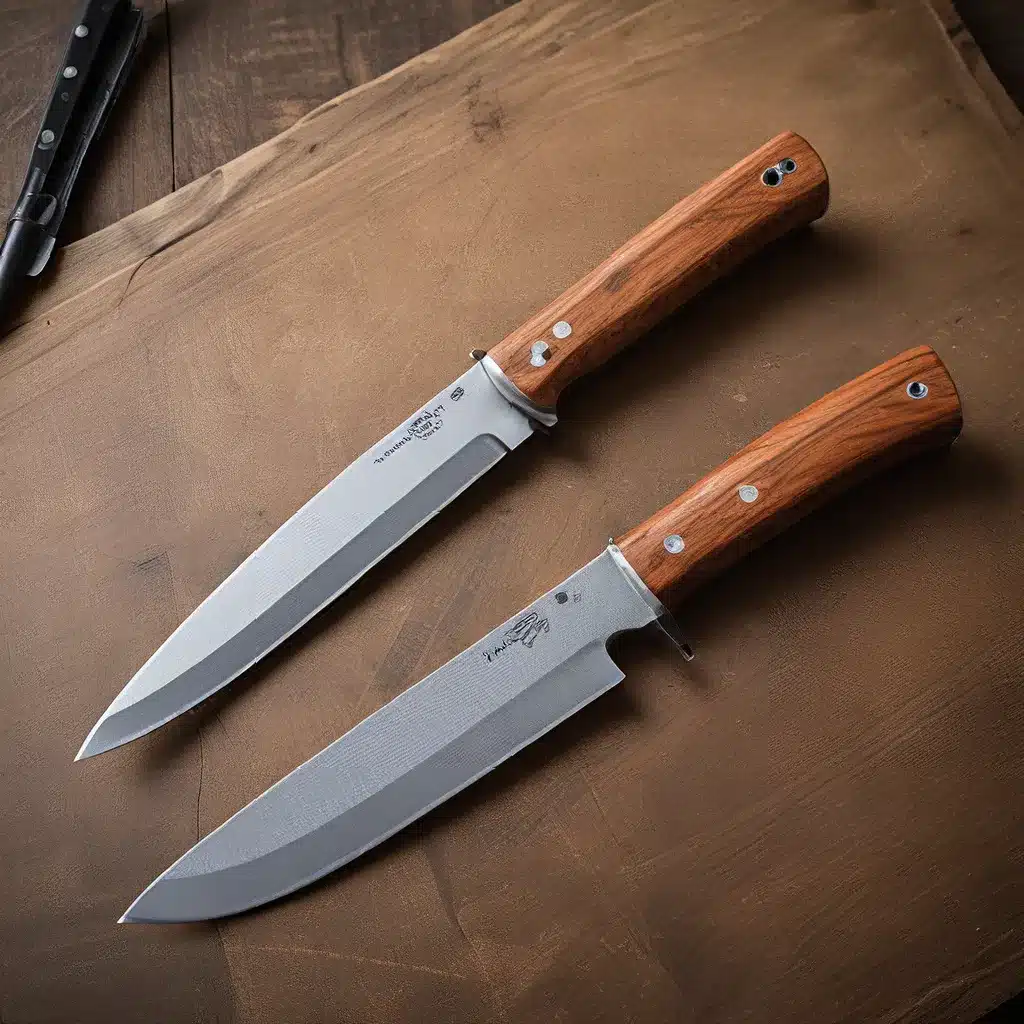
As a seasoned outdoor enthusiast and self-proclaimed “knife nut,” I’ve learned a thing or two about keeping my blades in tip-top shape. And let me tell you, there’s nothing quite like the satisfying feeling of running your fingers along a freshly sharpened knife – it’s like a symphony for the senses.
But don’t be fooled, friends – maintaining your knives isn’t just about looking and feeling good. It’s a crucial step in ensuring your tools are safe, effective, and built to last. Whether you’re slicing up your latest catch for a fish fry or carving out that perfect hiking stick, a well-maintained knife can make all the difference.
So, buckle up and get ready to dive into the world of knife care. I’m about to share with you the insider secrets that’ll have your blades performing like a dream, and your friends will be begging to know your secrets. Let’s get started, shall we?
Understanding the Anatomy of a Knife
Before we get into the nitty-gritty of knife maintenance, it’s important to have a basic understanding of how your trusty blade is put together. After all, knowledge is power, and the more you know about your tools, the better you can care for them.
At the heart of every knife is the blade, which is typically made of high-carbon steel or stainless steel. The blade is then attached to the handle, which can be crafted from a variety of materials like wood, plastic, or even bone. The point where the blade and handle meet is called the bolster, and it’s often designed to provide a secure grip and added durability.
Now, the edge of the blade is where the real magic happens. This is the sharpened part that does all the heavy lifting, and it’s the area that requires the most attention when it comes to maintenance. The angle at which the edge is ground can vary, and this plays a big role in the overall performance and longevity of your knife.
Keeping Your Knives Clean and Corrosion-Free
One of the key aspects of maintaining your knives is keeping them clean and corrosion-free. After all, we can’t have our trusty blades looking like they’ve been through a war, can we?
Regular cleaning is essential to prevent the buildup of grime, food particles, and other contaminants that can lead to rust and degradation. Start by giving your knife a thorough wash with warm, soapy water, using a soft-bristled brush to scrub away any stubborn bits. Be sure to dry the blade completely, either with a clean cloth or by letting it air dry.
Now, when it comes to preventing corrosion, a little bit of oil can go a long way. I like to use a food-grade mineral oil or a specialty knife oil, applying a thin, even coat to the blade and letting it soak in. This creates a protective barrier that helps keep your knife looking shiny and new, even after extensive use.
Mastering the Art of Sharpening
Ah, the art of sharpening – it’s the holy grail of knife maintenance, and it’s a skill that takes time and practice to perfect. But trust me, once you get the hang of it, you’ll never look at a dull blade the same way again.
There are a few different tools you can use to sharpen your knives, from manual sharpening stones to electric sharpeners. Personally, I’m a big fan of the Warthog Knife Sharpener – it’s a simple, easy-to-use tool that gives me consistently great results.
When sharpening, the key is to maintain the proper angle and technique. Start by holding the knife at a 20-25 degree angle to the sharpening surface, and use smooth, even strokes, pulling the blade towards you. Remember to sharpen both sides of the blade to keep everything balanced.
And don’t forget to hone your knife regularly, using a steel or ceramic rod to align and straighten the edge. This helps maintain that razor-sharp performance between full sharpening sessions.
Storing Your Knives Properly
Now, let’s talk about something that’s often overlooked – proper knife storage. Sure, it’s not the most glamorous aspect of knife maintenance, but it’s crucial if you want to keep your blades in prime condition.
The worst thing you can do is just tossing your knives into a drawer or tool box, where they can get jostled around and potentially dulled or damaged. Instead, invest in a quality knife block, sheath, or magnetic strip to keep your blades safe and secure.
And speaking of sheaths, always use them when transporting or storing your knives. Not only does this protect the blade, but it also helps prevent accidental injuries – something that’s especially important if you’ve got little ones running around.
Maintaining the Edge: A Lifetime of Sharp Performance
Phew, we’ve covered a lot of ground when it comes to keeping your knives in tip-top shape. But the truth is, proper knife maintenance is an ongoing process – it’s not something you can just do once and then forget about.
Regular cleaning, sharpening, and storage are all essential steps in ensuring your blades stay sharp, safe, and ready for action, no matter what life throws your way. And let’s not forget about the importance of using the right tools and techniques – that’s where the real magic happens.
So, now that you’ve got the inside scoop, it’s time to put your newfound knowledge into practice. Go forth, my friends, and unleash the full potential of your knives – your culinary creations, outdoor adventures, and DIY projects are about to reach new heights. Happy sharpening!


